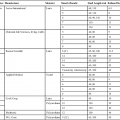M. Reza Taheri, Wendy A. Cohen, Basavaraj V. Ghodke, Danial K. Hallam and Kathleen R. Fink Selective catheter-guided digital subtraction angiography (DSA) remains a critical step in the characterization and treatment of intracranial aneurysms, vascular malformations, vasospasm, vascular injury, vasculitis, and arterial/venous occlusive disease. It also provides clear visualization of the vascular supply of intracranial masses. DSA offers unique information about vascular pathology, including high spatial resolution, selective vascular characterization, and the ability to evaluate hemodynamics. Neurologic complications of angiography are rare but are more likely to occur in patients of advanced age and with prolonged procedure time.1 An understanding of the technical components of the procedure, along with a knowledge of basic vascular anatomy and relevant bony landmarks improve visualization of certain pathologies and decrease potential complications. There are no absolute contraindications for this procedure,2
Use of Skull Views in Visualization of Cerebral Vascular Anatomy
![]()
Stay updated, free articles. Join our Telegram channel

Full access? Get Clinical Tree








